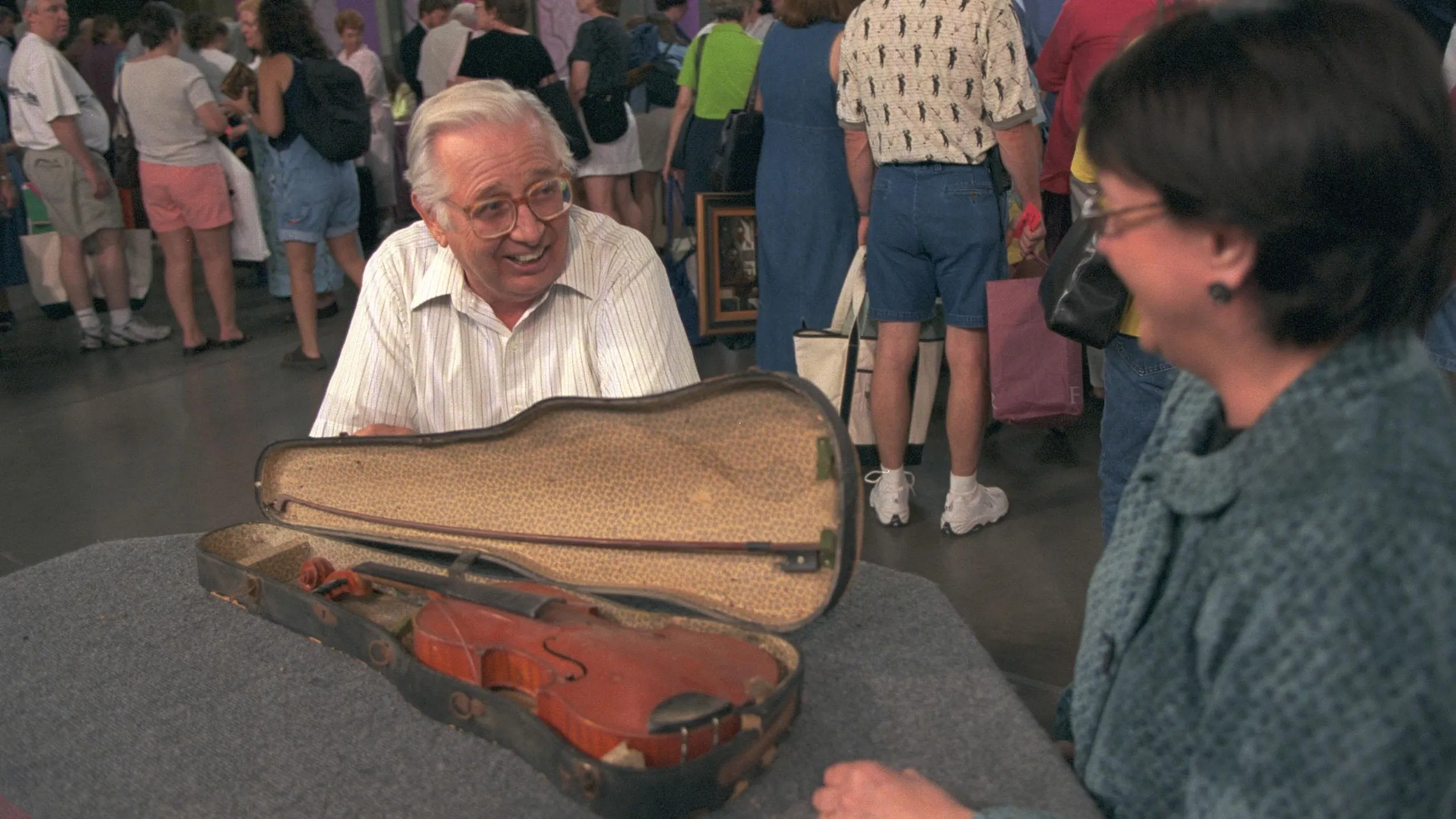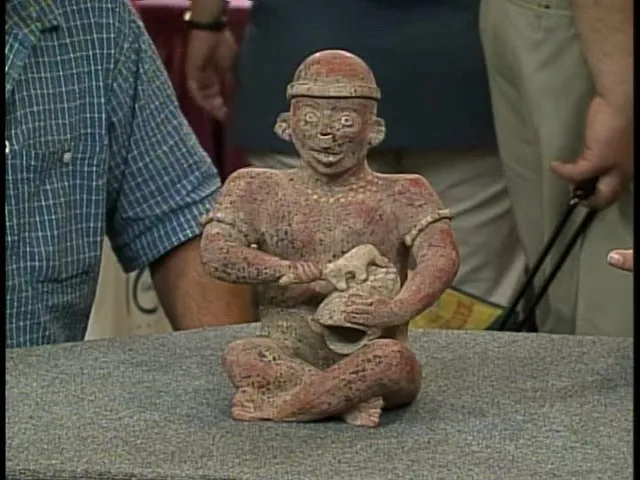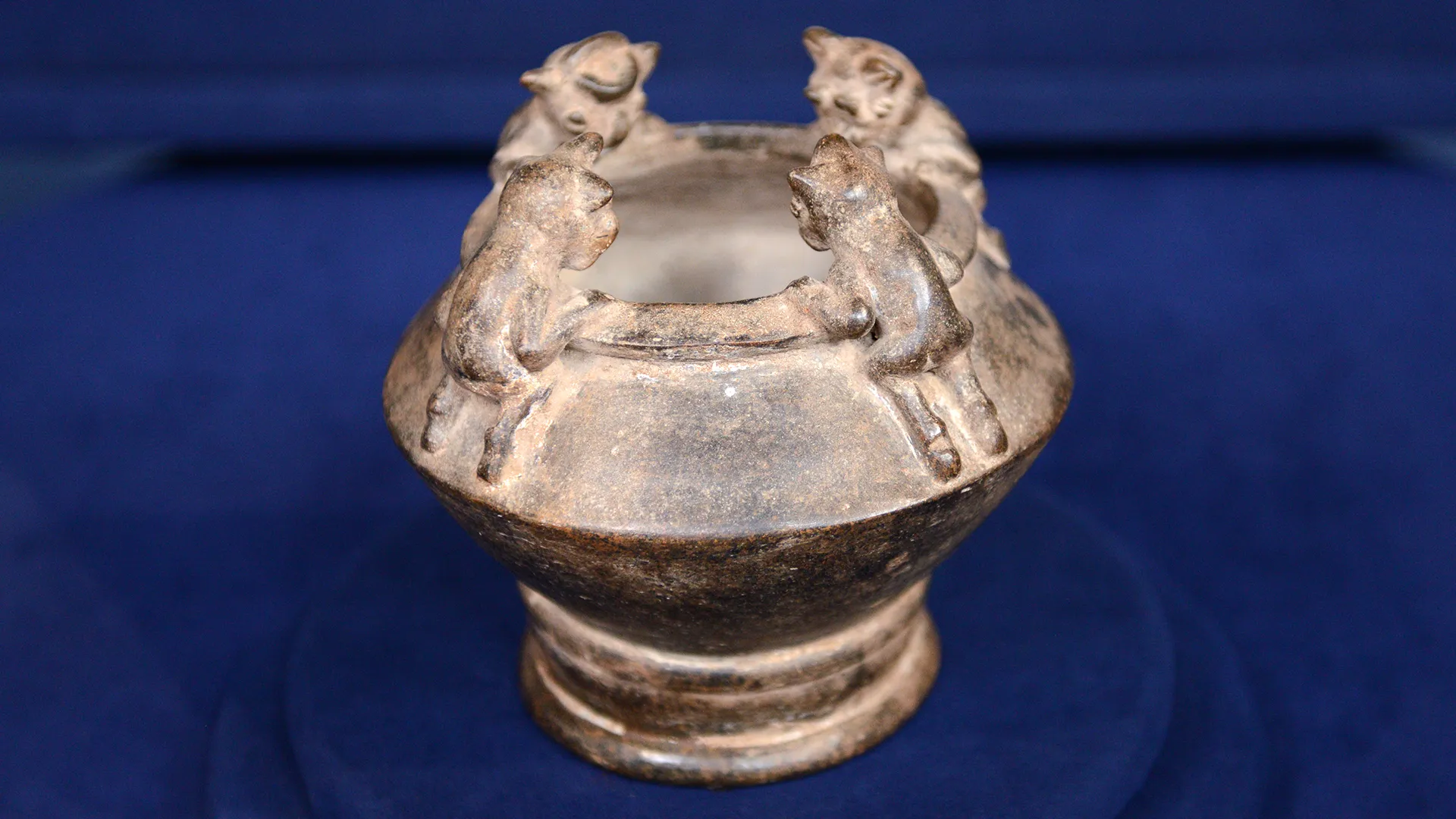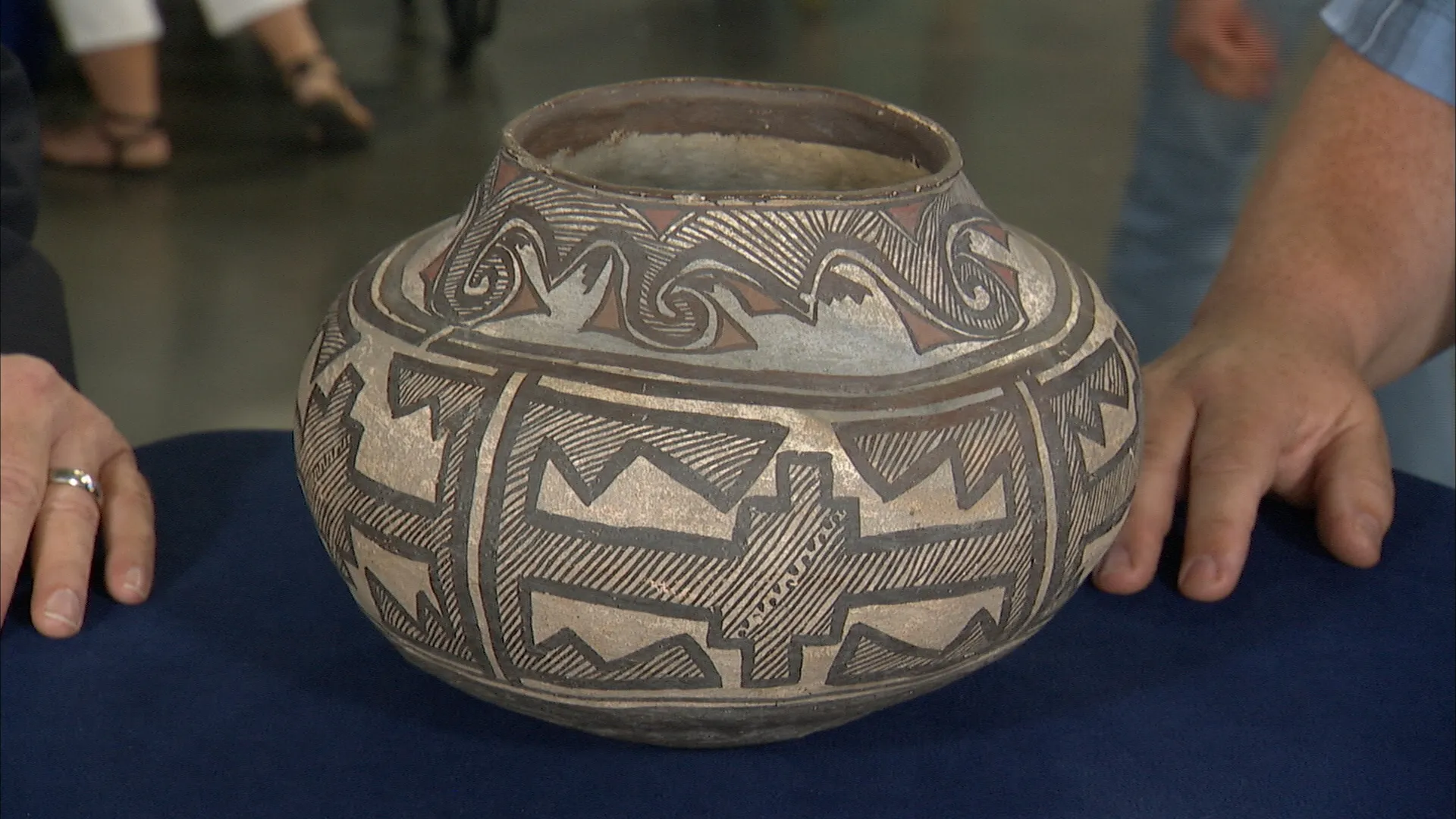GUEST: The pot came from my great-aunt. She moved out to Tucson, Arizona, in about the mid-'60s, late '60s. While she was driving out there in Tucson, Arizona, she saw the pot on the side of the road. (chuckling) And she just picked it up.
APPRAISER: Just lying on the side of the road?
GUEST: Just lying on the side of the road.
APPRAISER: That happens to me all the time.
GUEST (laughing): Right. I really know nothing about it. She thought that it was a Navajo pot. Okay. But one time, when I was in the Field Museum, I saw a pot similar to it under the Zuni display. And so I thought, well, it, it must not be Navajo, it must be Zuni.
APPRAISER: Now, the first thing that we do is, we look at the style. This is a classic rain bird design from the Zuni. The clay is Zuni. Now, the shape is interesting. Feel this slope here. This is diagnostic for 1880 to 1890. In a lot of cases, condition is a big deal, and I know that you noticed this damage. Actually, the damage is helpful to us-- a pot that's been used is going to be damaged. This is called an olla, or a short-necked jar. When we measured it, we saw this was 14-and-a-quarter inches in diameter. That's very, very large. So now I guess we know it's real.
GUEST (chuckling): Okay.
APPRAISER: What do you think it's worth?
GUEST: Originally, I thought it was maybe only about a hundred, a couple of hundred dollars.
APPRAISER: A couple of hundred dollars.
GUEST: Because it was so damaged. I thought it's not worth much.
APPRAISER: All right, all right. I can do a little bit better than that.
GUEST (chuckling): Okay.
APPRAISER: Zuni is really hot right now. In a private gallery, I think you're looking at $15,000 to $25,000.
GUEST (laughing): Oh, my gosh. That's unbelievable.










